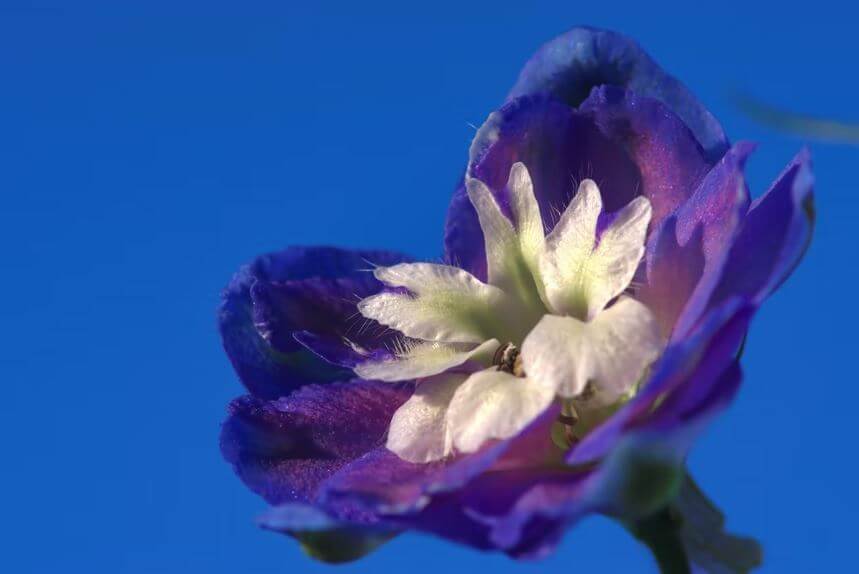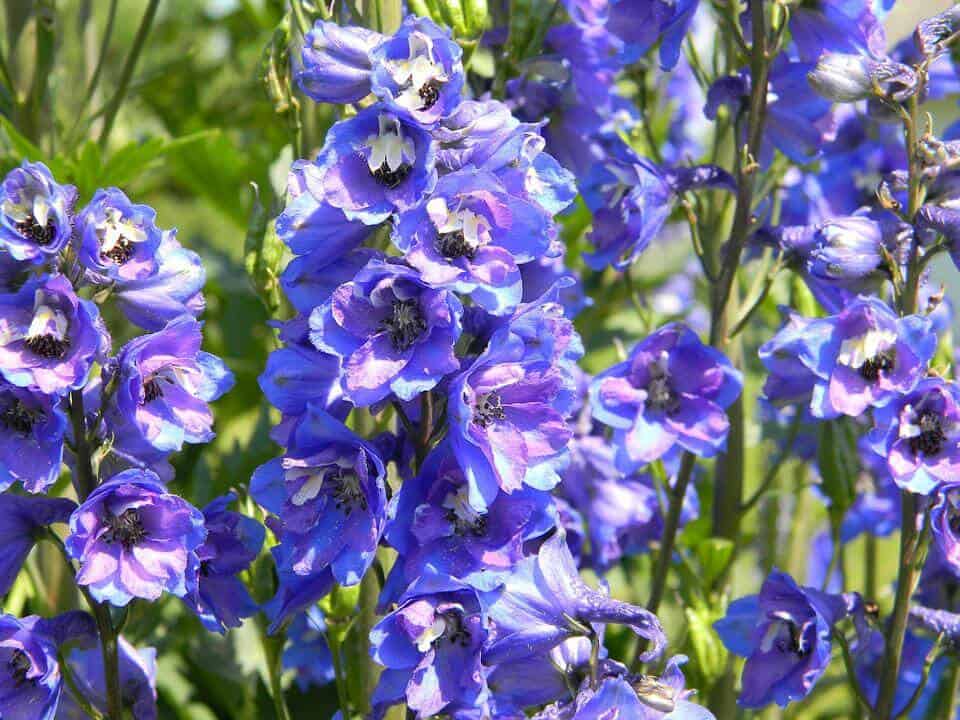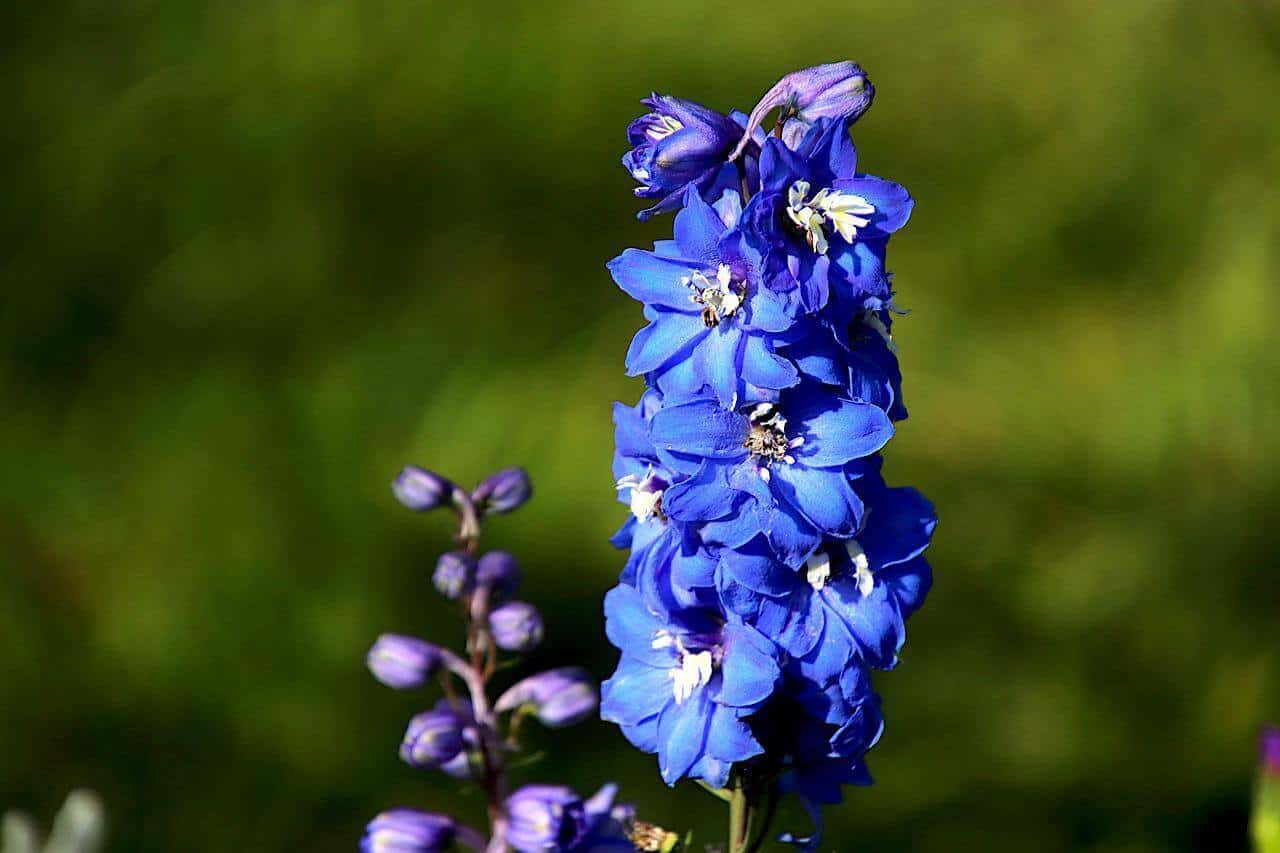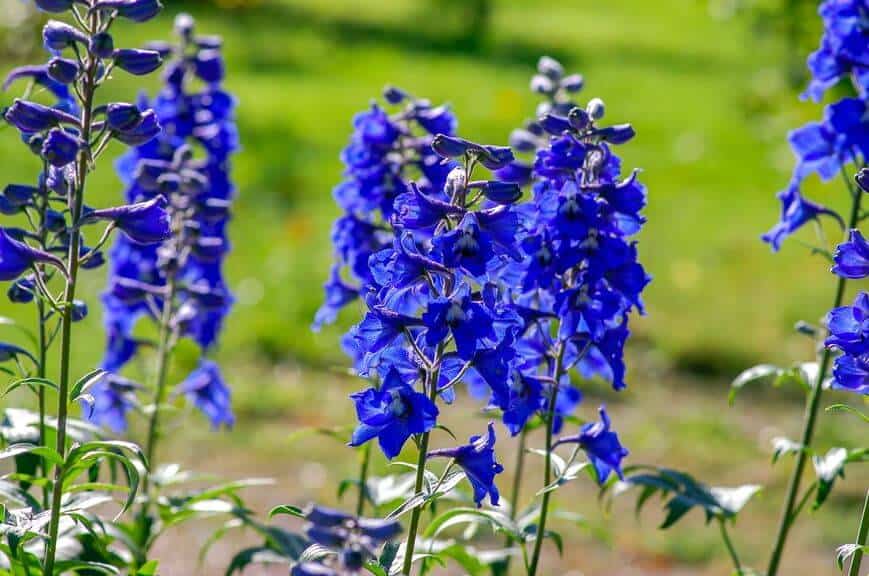Last Updated on September 8, 2023 by a Friendly Gardener
Blue Delphinium belongs to the Delphinium genus. There are over 300 species of plants in this species. There is a lot of variation across the different species of this genus—some are perennial while others are annual or biennial.
The reason for this plant’s vast popularity is that it blooms every summer with beautiful and vibrant flowers. Blue Delphinium, like the name suggests, grows blue flowers.
Gardeners usually love Delphiniums, but they can be finicky plants if you don’t understand their needs properly. They don’t like hot and dry weather and sudden rain or wind can be harmful to them.
Let’s dive into everything you need to know about blue Delphiniums.
Planting Blue Delphiniums

Blue Delphiniums need to be planted in quick-draining soil. Make sure to check the size of the variety before buying a pot.
Make a fairly large hole in the soil for the plant, even if the pot isn’t too big. It should be about 12 inches deep and 12 inches wide for tall varieties of Delphinium and 10 inches deep and 10 inches wide for shorter varieties.
The hole for the plant is intentionally big to ensure proper drainage. This is especially important during the winter. Bad drainage is the most common cause behind blue Delphiniums dying.
Take the soil you took out from the soil and put it in a separate container. Prepare the soil by mixing in 3 to 4 inches of compost. It will make the soil nutrient-rich.
Now take this mixture and fill it back in the hole. Fill it up till the point where it can support the plant. The root ball of the plant should be at the same level as the soil.
Pat the soil down to make it even and water it. You need to keep the soil moist during the first few weeks, but take care that the plant is not treading water. This is why drainage is very important for blue Delphiniums.
Blue Delphiniums Plant Care

Delphiniums have very shallow roots and need to be watered well. You shouldn’t let the soil dry completely. Water as frequently as needed, especially if there is no rainfall.
Mulching the soil is good for the plants and a 3 to 4-inch layer usually does the trick. It will help retain moisture and help prevent rot.
Organic matter or compost should be added once every year to replenish the nutrients in the soil.
If you planted a tall variety of Delphinium, you will need to provide support for the stalks. Put stakes in the soil so that the flower stalks don’t bend or topple from the weight they are carrying.
The stalks are delicate and even the weight of water drops from rain can prove too much for them. Install the stakes as soon as the stalks are about 12 inches tall.

The easiest way to provide support to the flower stalks is to use bamboo sticks. Create an outline with the bamboo stakes and weave some string through the structure, somewhat like a spider web.
Install this structure over the flower patch. As the stalks grow, they will enter the opening in the web and stay supported. The bamboo structure you create for the stalks should be at least 3 feet tall.
There are some “grow-though” stakes available that you can buy for your Delphiniums. These are shaped like a hoop and save you a lot of the legwork.
You should apply a liquid fertilizer to the soil every 2-3 weeks during the growing period. Balanced fertilizers work best for blue Delphiniums.
If you see any exhausted flower stalks, cut them back to side shoots. When the blooming season is over, go ahead and chop off the stalks to ground level. New stalks will develop with time.
This also lets the stalks survive the approaching cold weather. If you take good care of them, they may even survive a light frost.
Common Pests and Diseases

Here are the common pests and diseases that plague blue Delphiniums:
-
Slugs and Snails
Slugs and snails can be hard to spot because they blend in with the soil very well. However, they leave behind a gooey secretion which usually gives them away.
They like to lay their eggs in moist soil, which is why they are attracted to Delphinium plants.
You can get rid of them by handpicking them or laying down boards on the soil for 1 or 2 days. Flip them over early in the morning and you will find the slimy critters hiding underneath. Alcohol is also effective at killing slugs and snails.
-
Root Rot
Delphiniums are susceptible to root rot because they need moist soil to survive. Overwatering is the reason behind root rot. You need to monitor the soil carefully to prevent overwatering. Pick a well-draining soil mix and mulch the soil to help it retain moisture. This way, you can reduce the frequency of watering.
-
Powdery Mildew
Powdery mildew is a fungal disease. It makes plants look like they have a dusting of flour on them. It starts out as tiny white spots but spreads very quickly. It damages the leaves and can make them turn yellow and fall off or twist around and become disfigured. If you spot powdery mildew, cut off the infected parts of the plant and dispose of them safely. If it is spread too far, try to get rid of the infection with a mixture of baking soda and water.
-
Rust
Rust is another fungal parasite. It latches on to a host plant and is harmful to the plant’s health. It doesn’t kill the plant because it needs a live host to survive. It can look like white or yellow spots or reddish pustules below the leaves. You will need to get rid of all the affected leaves as there is no way to salvage them. You can prevent rust by sprinkling some sulfur over them.
Parting Thoughts
Blue Delphiniums are loved for their striking blue flowers. They are easy to care for and don’t demand too much effort or attention. This makes them a favorite among amateur and professional gardeners alike.
As long as you know about their needs and take the time to understand how to care for them, you will be able to grow a successful harvest of blue Delphiniums.

